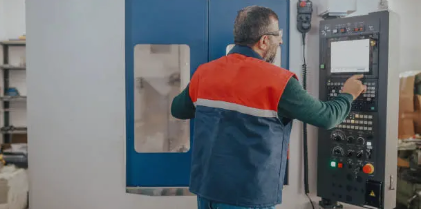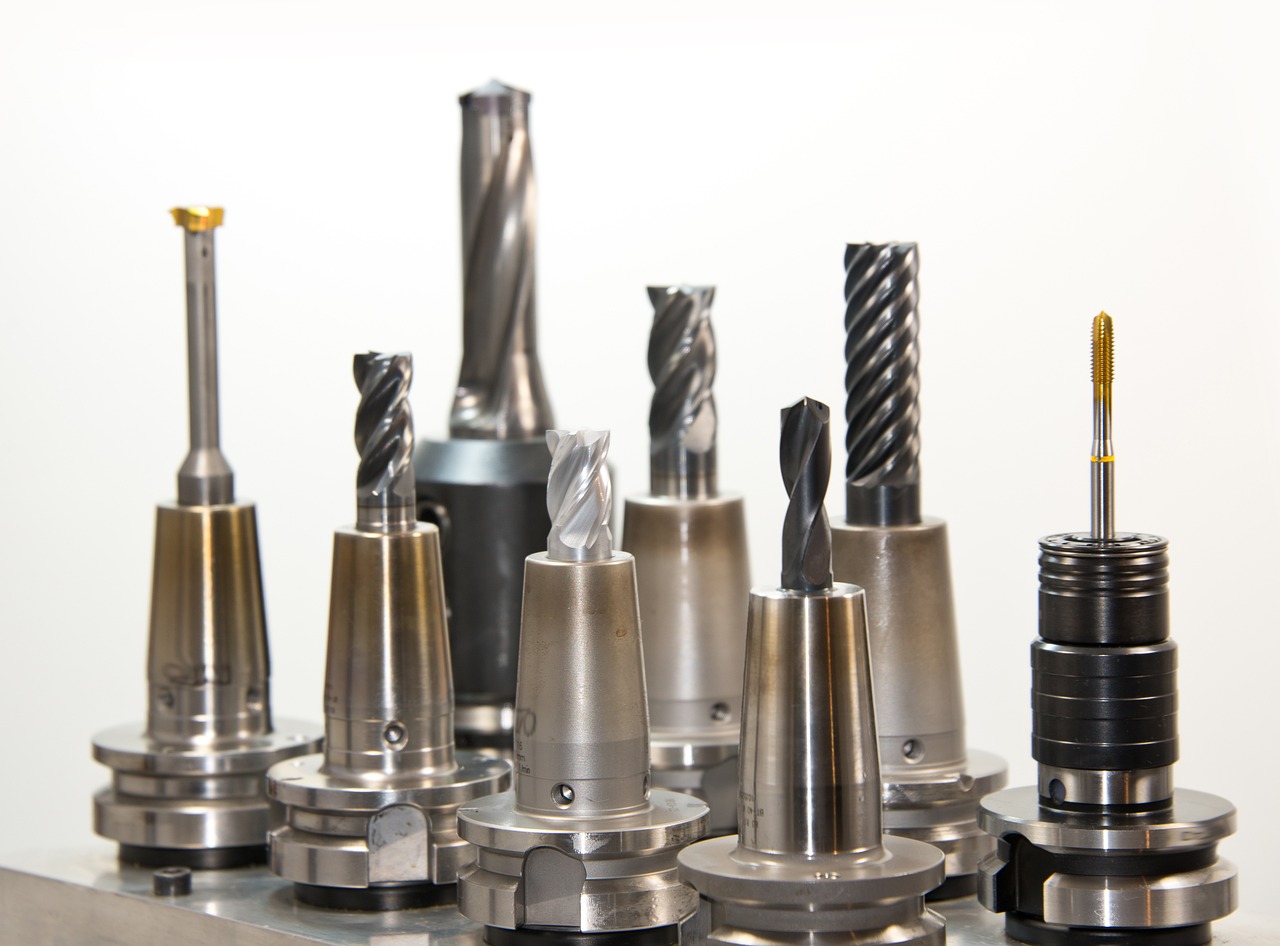In the ever-evolving landscape of manufacturing, precision is paramount. As industries strive for perfection in creating intricate and complex components, the role of Computer Numerical Control (CNC) machining takes center stage. While 3-axis machining has long been the standard, advancements have ushered in the era of 4-axis and 5-axis CNC machining, opening new dimensions of possibilities.
Traditionally, CNC machining operated in three dimensions – X, Y, and Z, which is 3-Axis CNC Machining. While effective for numerous applications, the limitations become apparent when dealing with intricate designs that demand a more nuanced approach. This limitation spurred the evolution toward 4-axis and 5-axis CNC machining, pushing the boundaries of what is achievable in modern manufacturing.

4-Axis CNC machining is a sophisticated manufacturing technique that employs computer numerical control (CNC) to manipulate a machine tool along four distinct axes concurrently. This technology facilitates the creation of intricate components with exceptional accuracy. The four axes - X, Y, Z, and the rotational A-axis (pivoting around the X-axis) - empower the machine to execute complex cuts and geometries unattainable with conventional machining approaches. Owing to its capacity for precision and complexity, 4-Axis CNC machining is indispensable in industries such as aerospace, automotive, and medical technology, where exactitude and intricate detailing are of utmost importance.

A 5-axis CNC machining process shares similarities with a 3-axis CNC machining process, but it incorporates additional features that offer two extra axes and significantly more cutting versatility.
In a 5axis CNC machine, the spindle and cutting tool operate along three axes. However, there are also rotations on the X-axis (known as the A-axis), Y-axis (referred to as the B-axis), and Z-axis (termed the C-axis). Depending on the machine’s configuration, any two of these rotational axes can be utilized. The versatility of 5-axis CNC machining allows it to be used in various ways. It can execute tasks such as milling and turning, meaning a single machine can handle multiple parts.
1. Number of Rotational Axes:
The primary difference lies in the number of rotational axes. While 4-axis machining introduces an additional axis (typically the A-axis), 5-axis machining goes a step further by incorporating a fifth rotational axis, often denoted as the B or C-axis. This extra axis in 5-axis machining allows the cutting tool to tilt or pivot, offering unparalleled freedom in approaching the workpiece.
2. Flexibility and Machining Angles:
The increased number of axes in 5-axis machining translates to greater flexibility. Unlike 4-axis, which can rotate around one primary axis, 5-axis can pivot from multiple directions. This dynamic movement enables the cutting tool to reach more angles, facilitating the machining of intricate geometries with smoother toolpaths. 5-axis CNC machining is particularly advantageous when dealing with complex designs that demand machining from various angles.
3. Versatility in Complex Geometries:
While both 4-axis and 5-axis machining excel in handling complex parts, the latter shines in its versatility. 5-axis machines can maneuver around a workpiece with exceptional freedom, resulting in a superior ability to produce intricate and detailed components. The additional axes in 5-axis machining eliminate the need for multiple setups, reducing errors and increasing overall efficiency in manufacturing.
4. Programming and Operator Skill:
The complexity of programming increases with the number of axes. 5-axis CNC machining requires more intricate programming to control the additional movements, demanding skilled operators to ensure optimal results. In contrast, 4-axis machining, while still requiring expertise, is relatively simpler to program. The choice between the two often involves a balance between the desired machining complexity and the skill set of the operators.
1. Project Requirements:
Understanding the specific requirements of your project is paramount. If your components involve intricate geometries that demand machining from various angles, 5-axis CNC machining may be the preferred choice. However, for projects with simpler designs that don't necessitate multi-angle machining, 4-axis CNC machining could be a more cost-effective solution.
2. Cost Considerations:
The cost factor plays a crucial role in the decision-making process. Generally, 5-axis CNC machines tend to be more expensive than their 4-axis counterparts. Businesses need to evaluate whether the added capabilities of 5-axis machining justify the increased investment, considering the nature and scale of their projects.
3. Complexity of Programming:
Programming intricacies escalate with the number of axes. 5-axis CNC machining demands more sophisticated programming to control the additional movements, requiring skilled operators. On the other hand, 4-axis machining, while still requiring expertise, is relatively simpler to program. Evaluate the available skill set within your team or the feasibility of acquiring the necessary expertise.
Fine Precision Co., Ltd is a leading provider of advanced machining services, specializing in 5 Axis Machining. With a strong commitment to precision and quality, we have established ourselves as a trusted partner for businesses across various industries. Our 5 Axis Machining Service is one of the forefront of our offerings. This state-of-the-art technology allows us to produce complex and intricate parts with an exceptional degree of precision. By manipulating the cutting tool along five different axes simultaneously, we are able to create parts that are not only accurate but also have a superior surface finish.
The progression from 3-axis to 5-axis CNC machining signifies a substantial advancement in both precision and versatility. This evolution in machining technology allows for the creation of more complex and intricate parts, enhancing the capabilities of various industries from automotive to aerospace and medical technology.
However, the decision to transition from 4-axis to 5-axis machining should not be taken lightly. CNC machining service manufacturers must meticulously evaluate their project specifications and requirements. The increased complexity and precision offered by 5-axis machining can be a significant advantage, but it also presents unique challenges. These include the need for advanced programming skills, increased machine and maintenance costs, and the requirement for more sophisticated tooling and fixtures. Therefore, the decision should be based on a careful analysis of the project’s needs, the potential benefits, and the associated challenges. The choice between 4-axis and 5-axis machining ultimately depends on the specific demands of the project and the resources available to the manufacturer. By making an informed decision, manufacturers can ensure they are utilizing the most effective and efficient machining process for their specific needs.
What materials can be machined using 5-Axis CNC machines?
5-Axis CNC machining can be applied to various materials, including metals (aluminum, titanium, steel), plastics, composites, and wood, making it versatile for different industries and applications.
What challenges are associated with 5-Axis machining?
Challenges may include programming complexity, toolpath optimization, and machine calibration. Skilled operators and advanced software are essential for maximizing the benefits of 5-Axis CNC machining.
Is 5-Axis machining suitable for prototyping and production?
Yes, 5-Axis CNC machining is well-suited for both prototyping and production. Its ability to create complex parts in a single setup makes it efficient for producing prototypes and small to medium production runs.
How can I optimize designs for 5-Axis machining?
Design optimization involves considering the machine's capabilities, minimizing tool changes, and optimizing toolpaths. Collaboration with experienced machinists during the design phase is crucial for successful 5-Axis machining projects.